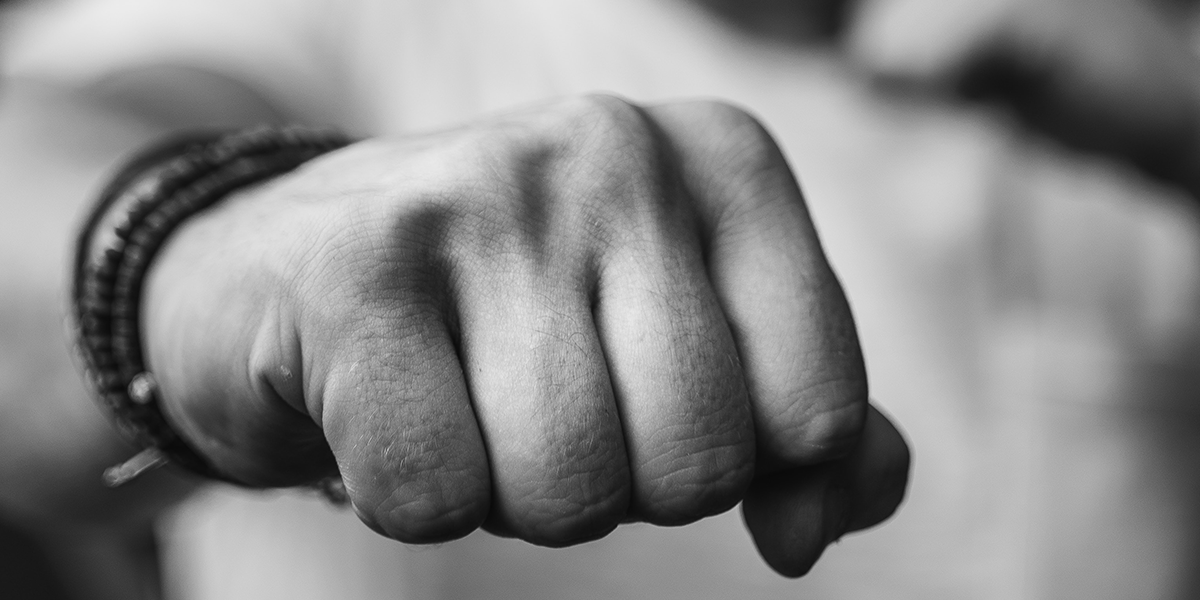There’s very few ways I can think of to relieve stress than to punch something.
Or, at least, envision punching something.
That’s why I love the DDP Yoga Dynamic Resistance Punches so much. I feel like I’m obliterating anything in front of me while I do it.
Invariably, I’m asked the question about how to form a punch. My review of the DDP Yoga materials leads me to the conclusion that how to form the punch isn’t that big of a deal. That makes sense. DDP Yoga isn’t punching quite the same as punching to knock someone out.
It’s a workout. There’s a bit of a difference.
However, I make an attempt to form a structurally sound punch every time, and that’s how I like to teach it.
How To Form A Punch
There are a few ways to shape your hand into a fist.
See all the New Arrivals at YogaOutlet.com>>
Hold your fingers out straight like you’re going to high-five someone. Keeping your thumb out, curl your four fingers down so that they’re clenched into your hand. Then, take your thumb and wrap it on top of your index and middle fingers. It may touch your ring finger. Basically, that’s how you form a punch.
For the purposes of DDP Yoga, here are a few pointers:
- Don’t fully straighten your elbow. Always keep a bend in it. This will help keep your elbow safe, and won’t subject you to ailments like “tennis elbow.”
- The point of your elbow should face down and not off to the side.
- Extend your punch so that your index and middle fingers are the furthest knuckles out. This keeps your wrist in alignment, forming a stronger punch. If you ever needed to use a real punch, this is a good way to practice it so don’t hurt yourself.
- Always draw your opposite punch back to your waist.
If you want bonus points:
- You typically see a punch “corkscrew” out. What I mean by that is your punch starts on your waist facing palm-up, and it ends facing palm-down (more or less). Keep your wrist facing palm-up until right when you get to full extension, and then quickly rotate it down. In practical self-defense, that will provide you with a bit more power for your technique.
- If you’ve practiced martial arts, your style and school may prefer a particular hand technique. Careful observers may notice that my fists always take the form of the Okinawan fist, since I studied Okinawan martial arts for 12 years and hold a second-degree black belt in Okinawan karate.
And that’s how you form the punch.
How To Do DDP Yoga Dynamic Resistance Punches
Of course, by now, you’ve already learned how to create your own dynamic resistance. You’ll apply the DR concept to the punches, as well.
Lean on the DDPY Diamond Dozen to generate ideas. From a Supported Lunge stance (or Road Warrior stance, if you’re feeling frisky), reach out and grab an imaginary ball in front of you. Let’s assume your left leg is forward.
Pull your left fist back so that your right fist is out. In other words, you’re doing a reverse punch.
Now, using a typical count of 3, 2, 1, pull your right fist back as your left fist comes out. Then, punch your right fist out as your left fist comes back for 3, 2, 1. That is one rep. You will usually do three, but you also may do five.
How To Do DDP Yoga Fast-Twitch Punches
DDP Yoga offers another way to do punches. This time, you’re punching out quickly.
Assume your same position from the previous example – your left leg is forward and your right foot is back in Supported Lunge. Grab the ball, and pull your left fist back. You will do two punches rapid fire – left and then right – for a count of 1-1. Each count gets a punch. Count up for 1-1, 1-2, 1-3, etc., until you reach five or 10.
You might want to control your punches a little better than this guy.
What DDP Yoga Punches Work And Their Benefits
DDP Yoga punches work your shoulders, lats, arms, and chest. To create the dynamic resistance, these areas should be engaged at all times in the punching section of the workout. Your chest drives a lot of the power of the punch while your lat helps to stabilize your shoulder so you don’t injure it.
What’s not so obvious about these punches are that they are a deceptive assault on your balance. To stay in Supported Lunge, your core and your legs are working overtime, especially for the fast-twitch punches.
For these reasons, the DDP Yoga DR Punches are a great addition to your DDP Yoga workouts.
If you’d like to try them out, please check out my current DDPY class offerings!
Photo by Quinn Buffing on Unsplash
